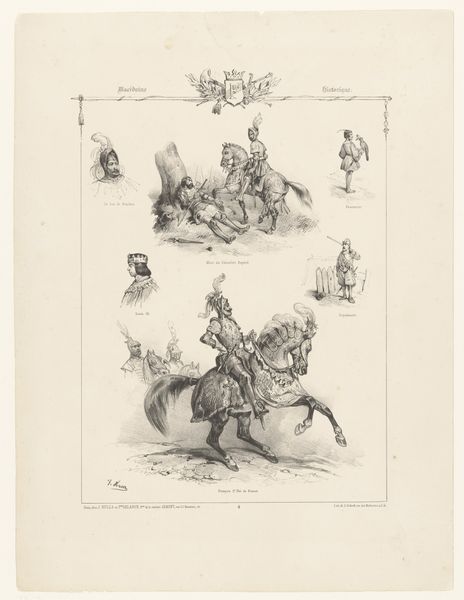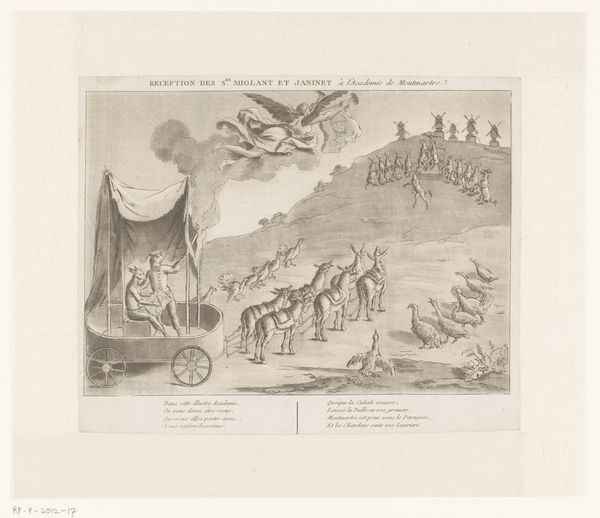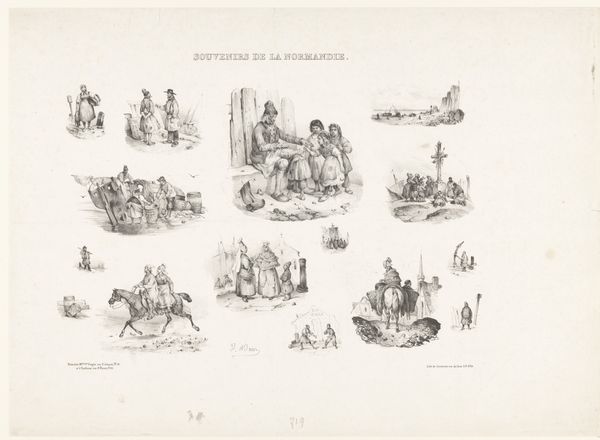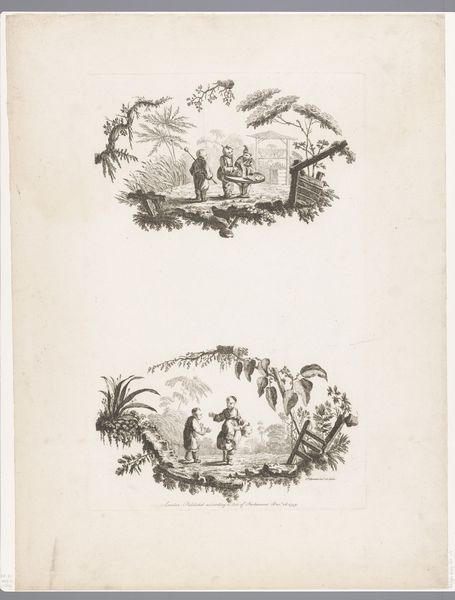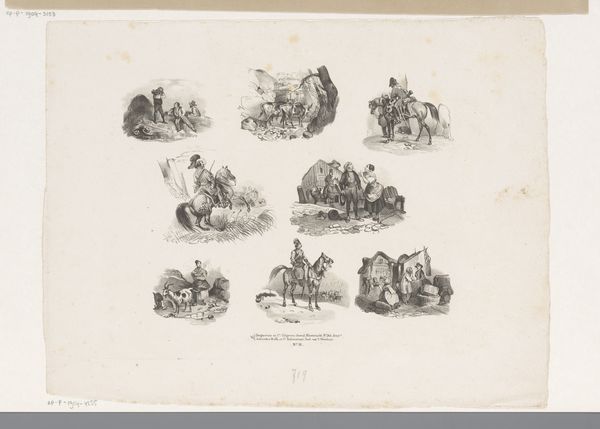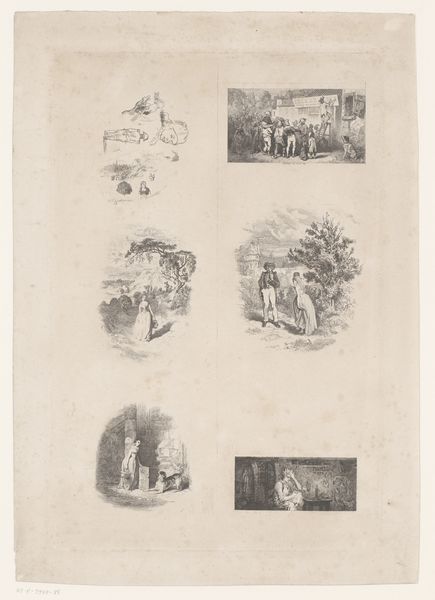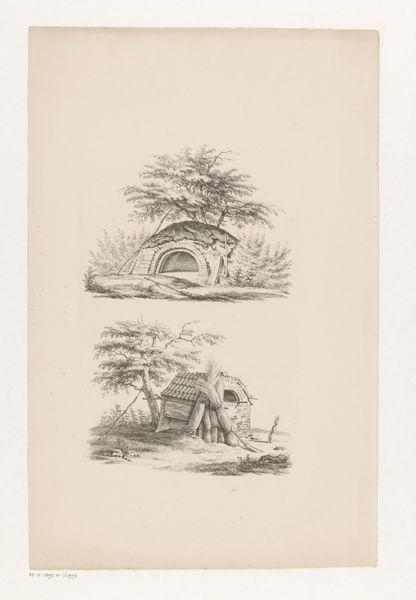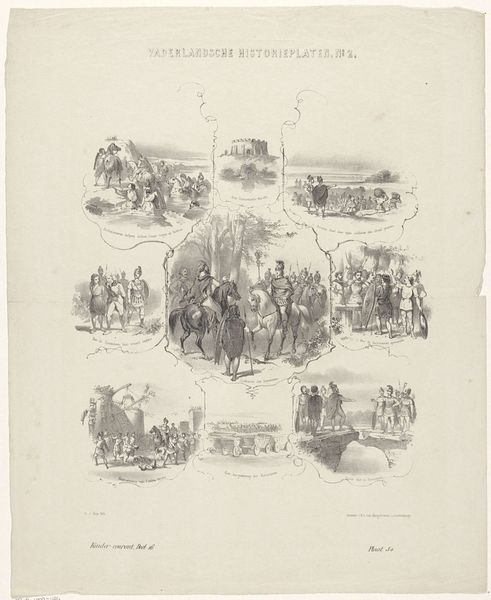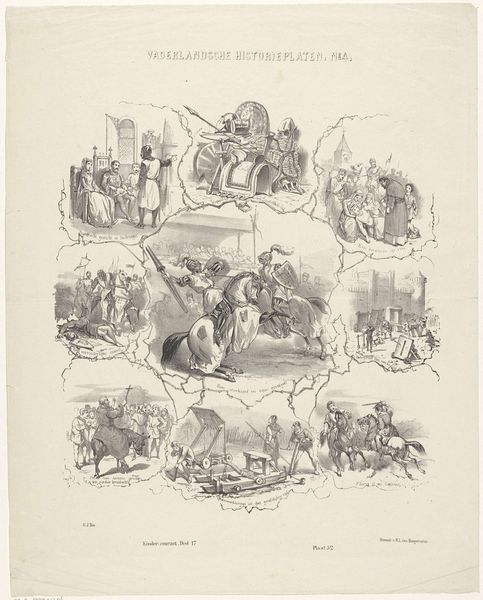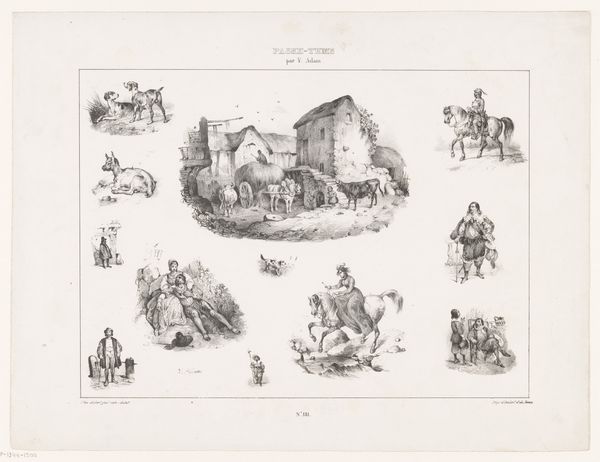
print, engraving
#
narrative-art
#
dutch-golden-age
# print
#
old engraving style
#
figuration
#
history-painting
#
engraving
Dimensions: height 428 mm, width 347 mm
Copyright: Rijks Museum: Open Domain
Curator: Here we have “Scènes uit het leven van de Batavieren,” or "Scenes from the Life of the Batavians," an engraving dating from before 1896. Editor: My first thought is that it looks almost like a quilt or a sampler—small vignettes connected together, almost a little too neatly. It feels very organized, maybe a touch artificial. Curator: Well, let's consider the engraving process. This wasn’t simply sketched. Each line was meticulously carved into a metal plate, and printed, making it a mechanical reproduction intended for wide distribution. The crisp lines speak to a labor-intensive process. Editor: And the scenes themselves! We have glimpses of daily life, rituals, conflicts…The recurring motif of communal gathering around food or fire speaks to the social structure of these communities, a symbol of unity and shared identity. What strikes me, though, is the suggestion of animism in the landscape depicted here. Curator: That central image, yes, the forest, feels primal and essential to the lives of the Batavians. Their dependence on the landscape and natural resources would dictate the tools and materials employed in everyday life. We have tools made from bones and flint depicted. It showcases ingenuity and how environmental constraints led to creative solutions. Editor: Precisely, and the spears and shields also depicted aren’t only tools. They speak of social order and power structures, and symbolize courage, honor, and the defense of ancestral lands. It reminds us how material objects transform into potent emblems over time. Curator: The decision to disseminate historical "facts" through affordable prints speaks to the rise of popular history, shaping ideas of nationhood through easily reproduced images. Editor: Looking closely, I now see so many artifacts treated reverentially. Clearly the intent here is to portray cultural beginnings as noble. There is very little realism in the piece overall, I would say, although its symbolism is strong and resonant. Curator: Right, by analyzing both its mode of production and the elements included in each individual panel of the engraving we reveal a picture of both social values and artistic decisions. Editor: I agree. By acknowledging and deconstructing historical imagery, we also unearth the social memories they encapsulate and influence.
Comments
No comments
Be the first to comment and join the conversation on the ultimate creative platform.
